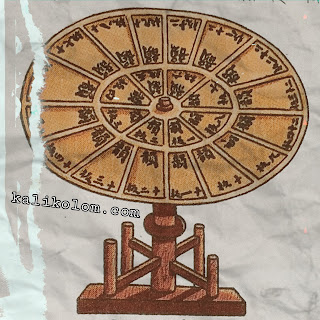Printing Revolution
1. Antique printing:
The history of the printing industry is at least 5,000 years old from today. About 3,000 BC, Mesopotamian merchants are known to have stamped earthenware. However, the publication of printed books began much later, in the ninth century AD. Handwritten books were published before being printed mechanically. Handwriting was done by employing a large number of transcribers. As a result, the price of books was very high and the number of books published was very low. Only the rich could afford to buy books in those days. Mechanical printing in China: In the ninth century, with the advent of mechanical printing in China, the days of handwritten manuscripts began. China was the first country to develop a modern printing system using mechanical techniques.
2. Entry of printing strategy from Arabia to Europe:
Printing technology from China reached the hands of the Arabs. The Arabs again brought this technology to Europe. Of all the things that progressed from the Renaissance in Europe in the fifteenth century, the most notable was the final advance in the printing industry in Europe. The modern printing press invented by Johannes Gutenberg of Germany was one of the best inventions in the world.
Revolution in the Chinese printing industry
The first modern printing industry was introduced in China in the 8th century AD. Two important technologies advanced in the printing system in that country: the invention of the printing method by wood engraved blocks, 2 the invention of the paper required for printing. The invention of these two technologies in China later set the stage for the printing revolution in Europe.
Printing on wooden blocks
The practice of printing on Chinese textiles was introduced earlier. The first method of mechanical printing was invented in this country around 593 AD. Early printing in China: During the reign of the Chinese Tang Dynasty (617 908 AD), a Buddhist sutra called Dharani Sutra was printed on paper by a wooden block between 650 AD and 60 AD, a copy of which was discovered in 1974. Copies of another book printed in China between 690 and 799 AD have also been found. Neighboring Korea, China, has also discovered paper-printed copies of wooden blocks (198 AD) that were printed between 690 and 605 AD.
2. China’s first newspaper:
The first newspaper was printed in Beijing, China, around 600 AD. In the eighth century AD, printing by wood or stone blocks flourished in that country. This method of printing by blocks is known as ‘xylography’. In the Chinese Tang Dynasty, the calendar was printed between 6 AD and 62 AD, making it the oldest printed calendar in the world. Liu Qing of China published the first printed map in 1155 AD.
First book printed
- 1. Printing on wooden blocks: In China, a translation of a Buddhist text called ‘Diamond Sutra’ was printed with the help of wooden blocks in about 6 AD. It is considered to be the first printed book in the world. The book is currently housed in the British Museum.
- Use of individual types: Already in China, B. Sheng invented different types of reusable types in 1040-41 AD. The use of burnt clay and wooden blocks for printing in China increased considerably by the thirteenth century. This time in China’s neighboring Korea

|
| China’s rolling type-box |
Type circulation occurs. Gradually, printing techniques began to evolve in Chinese blockchain technology. The technique of the famous printing press invented by Johannes Gutenberg of Germany in the mid-fifteenth century was almost identical to that of the Chinese printing press.
Paper Discovery:
- Expensive parchment: Despite the invention of the printing block, proper development of the printing industry was not possible before the introduction of paper in the world. This is because, before the introduction of paper, the thin skin of animals was used for printing books which was called ‘Parchment’. Printing in parchment was very expensive. A parchment needed to print a Bible required 300 sheep and 140 calf skins. Due to such a huge cost, large scale printing was impossible.
- Cheapaper circulation: The Chinese invented the technique of making paper from a mixture of torn cloth and plant-fiber (especially mulberry bark). When the first paper-making technology was invented in China in the second century AD, the printing industry underwent unimaginable changes. The technique of making paper from China reached Arabia by the eighth century AD and from Arabia it reached Europe by the twelfth and thirteenth centuries. Printing costs are significantly reduced when printing on paper begins. As a result, when the price of printed books decreases, the demand for books also increases manifold. The amount of book printing is also multiplied according to the demand.
Ancillary technology of printing
The technology of printing accessories in Chinese is also improving.
- Use of ink: The ink needed for printing was invented in that country. The letter-engraved wooden block was placed firmly on a table and the letters in the block were inked. The ink was applied to the block with a brush made of horsehair. The printable paper was then placed on the block. The paper was dried when the impression was made on it.
- Printing method: It was printed on a piece of paper. Sample copy printing was done in red or blue ink, but commercial production was done in black ink. A printer could print at least 1500 to 2000 double sheets of paper a day. After printing, the blocks could be carefully used again in the future.
China’s strategy shifted to Europe
- China’s strategy in Europe: China’s printing technology entered Europe through the Arabs and revolutionized it. As a result of Europe’s trade with China, China’s advanced printing techniques spread to Europe between 1250 and 1350 AD. This strategy is further developed in Europe.
- Gutenberg’s printing press: The odern printing press established by Johannes Gutenberg of Germany in Europe in the mid-fifteenth century was in fact an improved version of the Chinese block-printing system. Gutenberg invented a separate reusable type instead of a single block of one-page printing in China. This made further progress in the printing industry possible. Although Gutenberg worked tirelessly for four years to establish a printing press, it was not until 1454 that he was commissioned to print anything other than the Bible. But long before Gutenberg, book printing was introduced in China.
Revolution in the printing industry in Arabia
The Arab countries played an important role in setting the background of the printing revolution that took place in Europe after the invention of the printing press by Johannes Gutenberg in Germany in the mid-fifteenth century.
1. Printing technology from China to Arabia:
The Arabs made unprecedented advances in the printing industry by mastering Chinese printing technology and paper-making techniques. This technology of mechanical printing reached Europe through the Arabs, where an important revolution like the printing revolution took place.
2. Dr. Roper-like:
The famous scholar said. Dr. Geoffrey Roper shows that advanced printing systems were in vogue in the Arab world several centuries before Johannes Gutenberg invented the printing press in Germany in the fifteenth century. In his words, “Muslims have been practicing printing since at least 500 years before Gutenberg.” He noted that some of the older prints in Arabia showed that their designs, inscriptions, geometric scales, use of colors, etc., were of high quality.
Master the technique of making paper
Before the invention of paper, the main material for writing books in Arabia was animal skin or parchment. The technology of making paper from a combination of torn cloth and plant-fiber was invented in China by the 2nd century AD. In 651 AD, the Muslims of Arabia fought the Battle of Talas with China. Defeated in this war, several skilled paper makers from China were captured by the Arabs. The Arabs learned the basic technique of making paper from this captive Chinese craftsman. Using this technique, the Arabs later revolutionized the printing industry.
Improvements in paper making technology
The technology of making paper in the hands of the Arabs was further advanced. When they started using flax in the paper industry, high quality paper started to be produced. Muslim artisans in Arabia began using trip hammers, where Chinese paper artisans did all the paperwork by hand. The technology of making paper with the help of Trip Hammer or repeatedly hitting hammer is much improved. As a result, high quality paper is being produced in Arabia. With the proper use of high quality paper they made unprecedented improvements in the printing industry.
The proliferation of paper mills in Arabia
- Paper production in Arabia: As the technology of paper making improved, paper making factories started to be established in different parts of Arabia. The first paper mill was established in Samarkand, Arabia. Numerous paper mills were set up in Baghdad in the Arab world in the ninth century. From here the paper industry spread to other parts of Arabia. Paper is exported to Europe from a paper factory set up in Damascus. As production increases, the price of paper decreases, paper becomes more readily available and the quality also improves considerably.
- Paper mill outside Arabia: Paper mills were established in the ninth century in Morocco, Africa, after the establishment of paper mills in Arab countries such as Iraq, Syria, and Palestine. From that formula came the technique of making paper in Spain. The first paper mill was set up there in 1150 AD. Over the next two centuries, paper mills developed in various European cities. The twelfth-century paper “The Art of the Painter” is considered to be the first paper printed in the Christian world in Europe.
Book binding
The unprecedented advancement of the paper industry in Arabia led to the invention of advanced techniques for binding books printed on paper. Binding books are as light in weight on the one hand as they are lovely on the other. The thick cover of the book is covered with leather or silk. As a result, books are much more durable than before. The books are carefully kept with extra cover on the cover. By the twelfth century, an entire street in the Arabian city of Marrakech, neighboring Morocco, was filled with bookshops. There were more than 100 bookstores on that street alone.
Scope
1. Proliferation of paper making technology
The mass production of paper in Arabia and the strategy of publishing lovely books on paper soon reached Europe. By the twelfth century AD, the Arabs had spread their paper-making techniques to Spain and other countries in Western Europe. By the thirteenth century, paper-making techniques had entered India through Arab merchants. Within the next two hundred years, this strategy reached countries like Italy, France, Germany, Switzerland, etc.
2. Cheap printing
As a result, the days of printing in parchment in Europe came to an end and paper began to be widely used. As a result of printing on paper, on the one hand, the price of printed books is greatly reduced, on the other hand, the books become more beautiful. As a result, the demand for books also increased a lot. This made the printing revolution possible.
The revolution in the printing industry in Europe
The widespread use of paper in the post-medieval period, the invention of the printing press, the spread of education, the spread of the Renaissance, etc. led to unprecedented advances in the printing industry in Europe in the fifteenth century. The days of earlier handwritten manuscripts are over, and from the middle of the fifteenth century, books began to be printed in Europe with the help of printers. The books printed on the machine were relatively inexpensive, readily available, and lovely. As a result, as the demand for these books increases, so does the amount of books printed. This event is known as the printing revolution in Europe.
The background or cause of the printing revolution
From the middle of the fifteenth century, when the printing of books with the help of printers started in Europe, a revolution took place in the printing industry. Various issues played an important role as the background or cause of the printing revolution in Europe. E.g.
1. Circulation of paper
- Handwritten manuscript: In medieval Europe, the original manuscript called Exempler was copied and published by hand. At that time, books were published by hand writing on expensive ‘parchment’ made of sheep or calf skin. About 2,000 manuscripts of Aristotle have been found in the thirteenth and fourteenth centuries.
2. Circulation of paper:
Later, when Chinese paper-making techniques reached Europe through the Arabs, paper began to be widely used in the printing industry there. Arab merchants introduced paper-making techniques to Spain in the twelfth century AD. Over the next two hundred years, the technique spread to Italy (1280 AD), France (1340 AD), Germany (1390 AD), Switzerland (1411 AD), and books on paper became popular. The use of paper in printing books instead of the earlier parchment is on the rise. The introduction of paper made printing in Europe much easier.
2. Cheap printing
When books are printed on paper instead of partitions, they are as beautiful to look at as they are cheap. Books printed on paper attract more readers. The huge cost of printing a book in expensive parchment would be greatly reduced if paper printing was introduced. In the middle of the fifteenth century, the price of paper was only a fraction of that of parchment. During this time the production of paper increases according to the demand.
3. Use of printing press
1. Establishment of printing press
One of the things that was most directly associated with the printing revolution was the invention of the printing press. The technique of printing by wooden blocks, which was prevalent in China or Arabia, changed radically in fifteenth century Europe. Johannes Gutenberg invented the printing press in the mid-fifteenth century. He founded the first printing press in Menz, Germany. Within decades, printing presses were established in many parts of Europe.
2. Excellence in the printing industry:
During this time the advancement of the metal industry, the new type of fine metal letters engraved by the goldsmiths, etc., brought excellence in printing. As a result, the work of printing books through printing press started. In a short time a lot of books started to be printed. If the practice of proof correction is introduced in the case of printing books on machines, the error of the book will be reduced to a great extent. The books printed on the machine were much better and more accurate in terms of quality.
4. Increased demand for books
Earlier, only the upper class enjoyed the luxury of buying books. Later, the cost of production of printed books was very low as a result of printing by machine instead of handwriting and printing on cheap paper instead of expensive parchment. As a result, cheap and lovely books are reaching the general readers. Enthusiastic people from all walks of life buy books. Earlier, the only way for university students to acquire knowledge was through teacher lectures in the classroom. But because books are cheap, students also buy a lot of books. Thus the demand for printed books in Europe multiplied.
5. Effects of Renaissance:
The spread of the Renaissance ideology in Europe in the fifteenth century was particularly instrumental in the development of the printing revolution. The Renaissance brought about an unprecedented flourishing of knowledge in all branches of education, including literature, science, and the arts. The interest in acquiring knowledge arouses people of all walks of life. Numerous books on various topics of renaissance ideology began to be published. During this time many new educational institutions were established and education spread widely. As a result, the demand of people to buy books has increased many times In this situation, the newly invented printing press began to meet the demand for human knowledge by publishing a lot of books.








